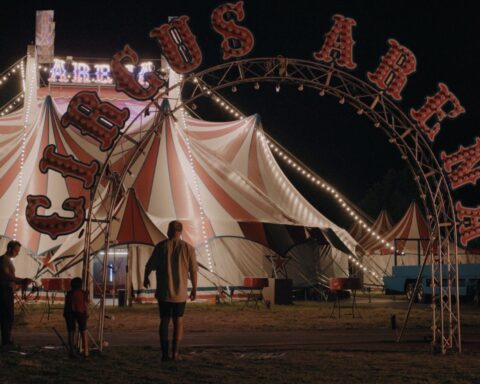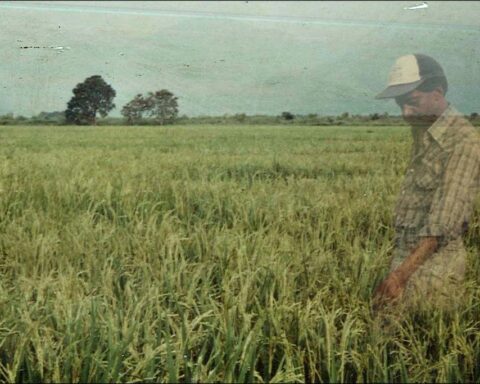The Artist & the Pervert
(Germany, 96 min.)
Dir. Beatrice Behn and René Gebhardt
Artscapes. Program: (North American Premiere)
A smack of politically incorrect racial sex play, a spanking of gender-inappropriate kink and a touch of genius entitlement add up to a happy creative marriage in the provocative, warm-hearted film The Artist & The Pervert.
Co-directed and shot by Beatrice Behn and Rene Gebhardt, this German-made documentary focuses on the relationship between Georg Frederick Haas, a renowned Austrian modern music composer in his sixties and his wife, Mollena Williams-Haas, an American kink educator and performer, in her late forties. George and Molina, who split their time between New York and Europe, have both a marriage license and a master-slave contract, with him as the dominant “owner” and her as his “equal” slave and muse.
In the attention-grabbing pre-credit sequence, the filmmakers establish that there will be no coyness here. The naked Mollena, an African-American woman with a nose-ring and dyed blond curls, stands in the foreground, staring calmly at the camera while the plumply naked Georg, prowls behind her, hanging various paddling implements, like music notes, on a staff made of clotheslines.
Mollena is not typically so quiet. The story of their first date in 2013, after meeting through the online dating site, Ok Cupid, is recounted by Mollena on a “bawdy story” night at a New York club. She explains how the courtly Georg took her home, cooked her dinner, had sex with her, told her she was the woman of his dreams and made his offer: He wanted to “tame” her, for which she would be well-compensated. Two years later, they were wed.
Although visually simple (sofa-sitting and espresso-making scenes in the couple’s book-lined apartment), the film benefits from a wealth of organically edited archival photographic and video material on the subjects. Talking heads interviews establish the complexity of Haas’ work, known for microtonality and harmonic overtones, but also its anguished emotionality. They explain how his compositions have become hopeful and radiant with his new relationship, though online comments indicate some of Haas’ fans are more avant-garde in their musical tastes than in their erotic ones.
Examples of his work, in rehearsal and performance, include his masterpiece, In Vain, an opus for 24 instruments, written in 2000, in the wake of the rise of the right-wing Freedom Party in Austria. The spectre of Nazism and abuse has haunted him: His elderly mother, living in a chocolate box Austrian Alpine village, holds onto her Nazi-era racist views. She also insists Georg had an idyllic childhood, despite the physical abuse she and her late husband doled out.
Interestingly, Mollena is also skeptical of tying Georg’s childhood and his fascination with kink, arguing that if everyone who was abused as a child turned to BDSM, vanilla sex would be a rarity. Her own background confounds reductive psychology: she’s a politically aware feminist who finds fulfillment in “serving, ” achieving catharsis through erotic theatre. Raised in Harlem as a gifted student with middle-class expectations, Mollena nearly killed herself with alcohol abuse in her thirties before going into rehab. Her recovery becomes the subject of a concerto and spoken word collaboration with Haas, called Hyena, the animal associated with her inner demon.
The film’s title holds a playful ambiguity—who is the artist and who is the pervert here?—-but, in its light-hearted way, The Artist & The Pervert opens up a fascinating conversation about how people negotiate their individual wayward desires with the context of society’s power dynamics.
The Artist and the Pervert screens:
-Sun, Apr. 29 at Hart House
-Fri, May 4 at Hart House
Hot Docs runs April 26 to May 6. Please visit hotdocs.ca for more info.







